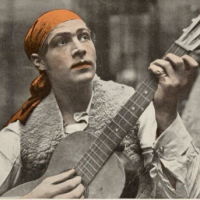DjangoBooks.com
Welcome to our Community!
Categories
- 20K All Categories
- 1.1K General
- 476 Welcome
- 59 Archtop Eddy's Corner
- 146 CD, DVD, and Concert Reviews
- 385 FAQ
- 26 Gypsy Jazz Italia
- 27 Photos
- 202 Gypsy Picking
- 21 Unaccompanied Django
- 15 Pearl Django Play-Along Vol.1
- 17 Gypsy Fire
- 45 Gypsy Rhythm
- 1.4K Gypsy Jazz University - Get Educated
- 131 Gypsy Jazz 101
- 227 Repertoire
- 219 History
- 708 Technique
- 51 Licks and Patterns
- 6 Daniel Givone Manouche Guitare Method Users Group
- 20 Eddie Lang Club
- 1.3K Gypsy Jazz Gear
- 802 Guitars, Strings, Picks, Amps, Pickups and Other Accessories
- 460 Classifieds
- 49 Recording
- 62 Other Instruments
- 18 Violin
- 5 Mandolin
- 22 Accordion
- 7 Bass
- 10 Woodwinds
- 348 Gypsy Jazz Events
- 143 North America
- 110 Europe
- 95 International











Comments
That’s interesting. I’ve never heard that around here over the past many years.
I’d love to hear more about this idea if you ever have time...
Will
Edgar Degas: "Only when he no longer knows what he is doing does the painter do good things.... To draw, you must close your eyes and sing."
Georges Braque: "In art there is only one thing that counts: the bit that can’t be explained."
I guess the videos will probably speak more clearly than my words
This video title about a mode would make me think I'm getting something different. This is like a little bluesy turnaround lick that Django plays to death, it happens to have some notes in common with Dorian but that's coincidental. Otherwise, yes the editing is perfect: short and sweet and to the point, no fluff and no talking. No jingle. Good presentation with the tab inline. Thanks for sharing.
Naming it "dorian" is the most accurate way I know to label it.
Can you please take the time to listen the references I am giving ? All of them are based on... the dorian mode
Dance nuptiale 1947 (00:56)
Blues clair 1943 (00:54)
Viper's dream 1937 (1:00)
Eveline (00:36-00:45)
Swingin' in springtime 1947 (00:56)
Viper's dream 1947 (00:53, 1:12)
Swing 42 1941 (00:46, 1:06)
Swing guitars 1947 (00:38)
Ol' man river 14 nov. 1947 (00:51)
Major blues scale: 1 - 2 - b3 - 3 - 5 - 6
Minor pentatonic blues scale: 1 - b3 - 4 - b5 - 5 - b7
Notes in the lick: 1 - 2 - b3 - 3 - 5 - 6 - b7
I wouldn't attribute this lick to the dorian scale because it resolves to a major third which does not fit that mode.
Dorian: 1 - 2 - b3 - 5 - 6 - b7
Also it does not have a dorian sound because it's played over major or dominant chords.
But if visualising the dorian scale helps you find the fingerings for this lick quicker than anything else I say whatever floats your boat! ;-)
I agree, a minor 3rd sounds blues when played over a major chord, but I already explain why I label it as dorian mode.
I like that
The last 2 notes resolves on C major, so it's not in C dorian (but sometimes Django does not resolves as you'll hear in the other references).
Btw, I just published the first definitive video of this serie :
Another way to have named it might have been, “Use a pitch collection one whole step below the major chord name”, or something like that.
Anyway, I’m getting too academic myself. What I really want to say is that you have a great idea, something which I certainly can benefit from, It helped me to know that Django used this idea so often, and I hope that you continue with your idea. It’s not uncommon to get some pushback when introducing something new to people. Don’t be discouraged and I can’t wait for idea #2 !